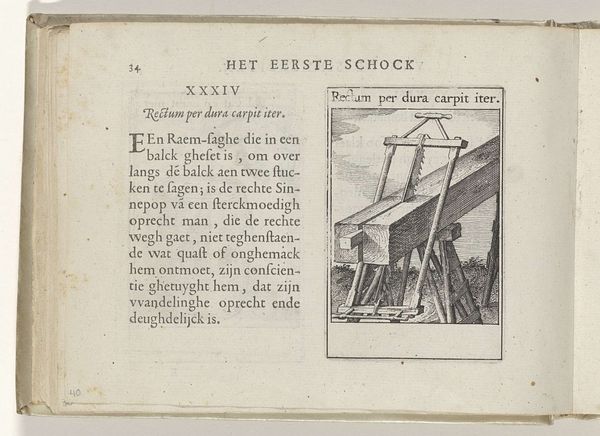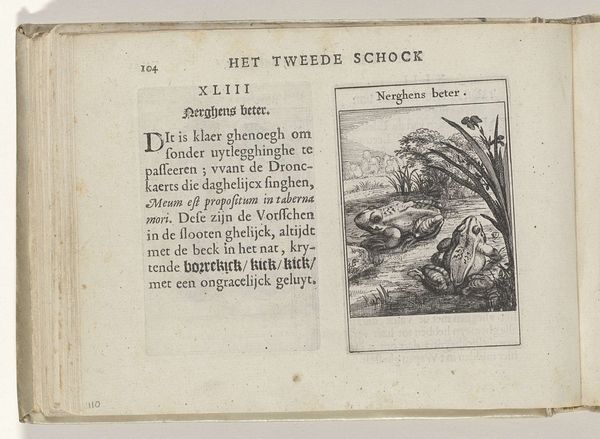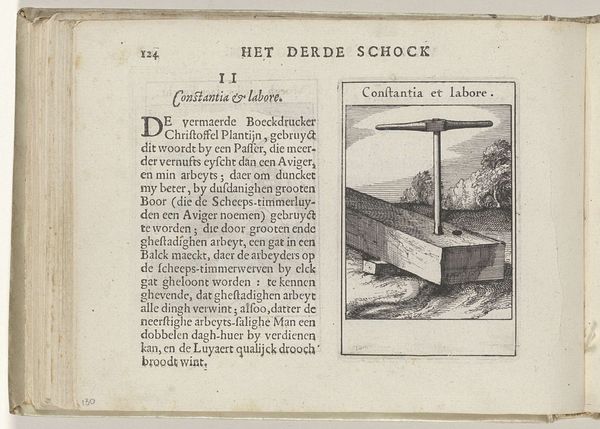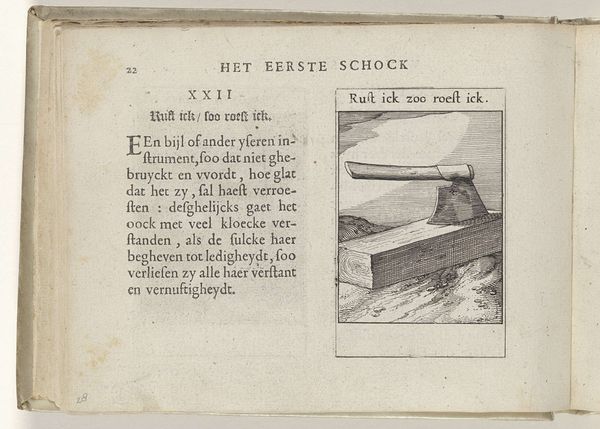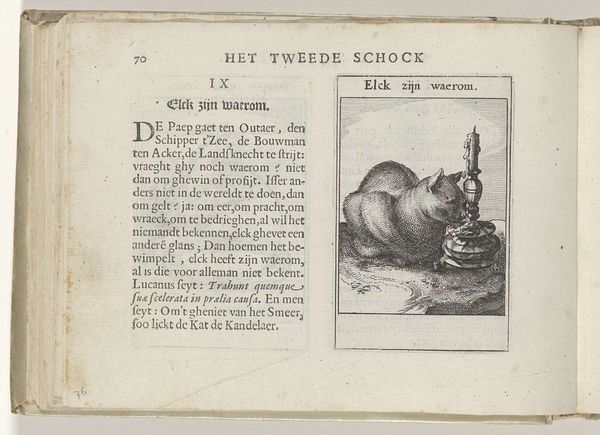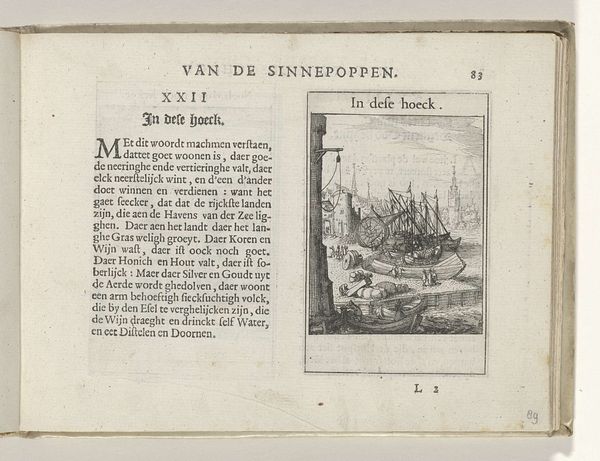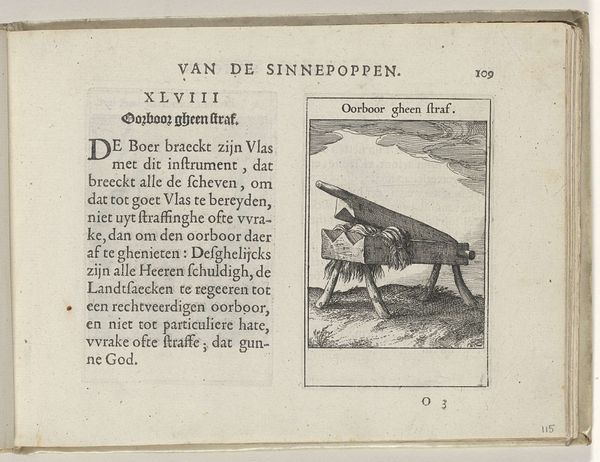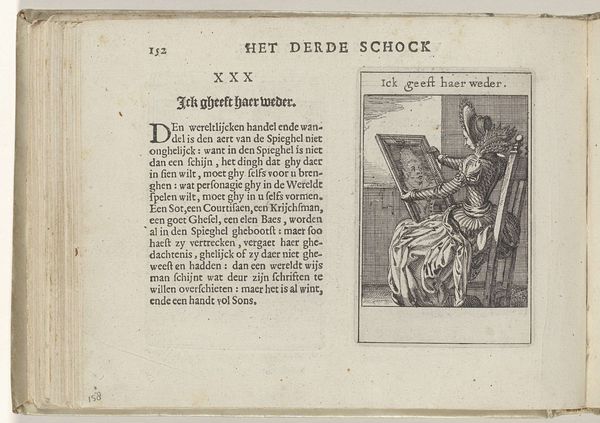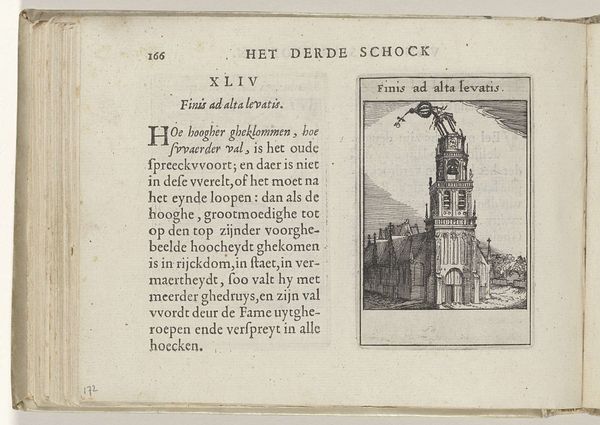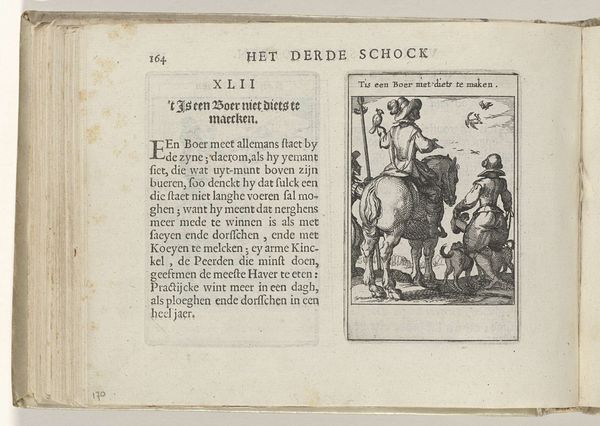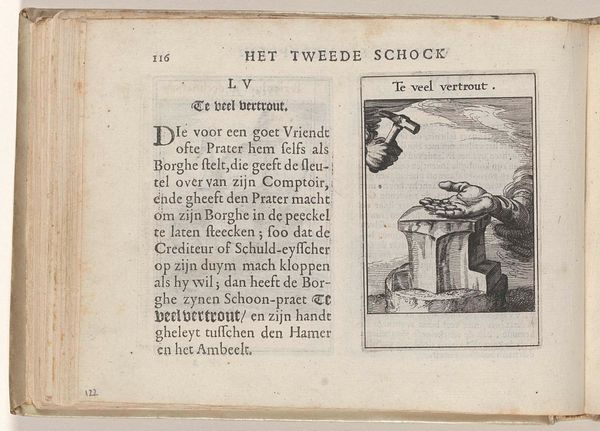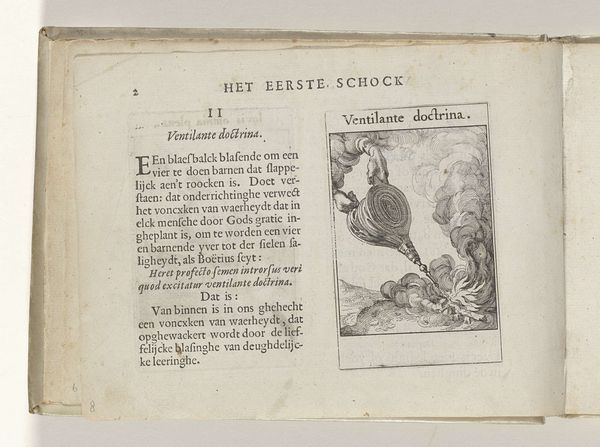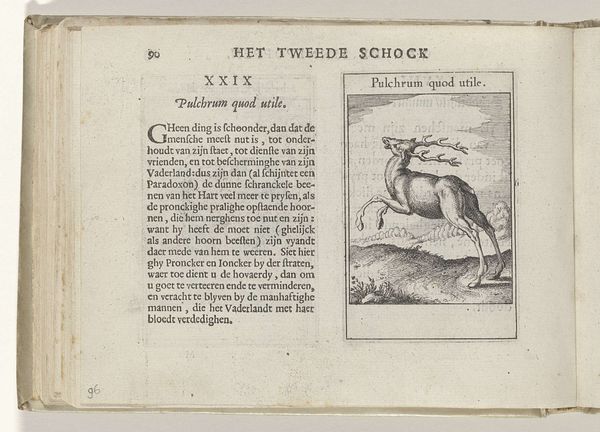
graphic-art, print, engraving
#
graphic-art
# print
#
11_renaissance
#
engraving
Dimensions: height 137 mm, width 188 mm, height 95 mm, width 60 mm
Copyright: Rijks Museum: Open Domain
Curator: Welcome. Here we have Roemer Visscher's engraving, "XLVI Dat cera fidem," dating back to 1614, housed here at the Rijksmuseum. It's quite the curious little scene, isn't it? Editor: My initial response is of intrigue. It's miniature, intricate, with tightly rendered details, the overall visual impact is one of compressed energy, ready to be released and unpacked. The tonal values lean towards monochromatic shading. Curator: Exactly! The piece features an open book, one page displaying text, and opposite it, a detailed image of a wax-sealed document. Note the materiality evoked through the print; the delicate fibres of the page alongside the more rigid imprint of text and image. What implications of this kind of production do you gather from it? Editor: This image of documents and seals signifies value systems: who makes the rules, how value is constructed. The engraving technique becomes significant because of how repeatable and scalable the design is: accessible to a specific segment of society, surely, but also beyond a singular context. Curator: Precisely, and consider the implications for the concept of trust. "Dat cera fidem," or "The wax gives faith," alludes to the weight given to a document sealed with wax. It points to contemporary anxieties about faith in systems of communication. But I think we could see those anxieties today, too. Editor: Yes. Looking closely, you see slight imperfections, inconsistencies, which, when contrasted with the very idea of legally binding documents, presents some intriguing semiotic oppositions that complicate matters. There are multiple messages being communicated here that contradict each other formally. Curator: And given that printed images circulated broadly, "Dat cera fidem" isn't just about official seals. The artwork explores the fragility of the contract itself and how it exists for each consumer, depending on the location where they purchase and read the original engraving. What appears stable—contracts—can easily become fragile objects. Editor: These dualities reveal tensions within a developing system and speak about material value beyond money and finance. This small, dense print contains more complex visual and conceptual information than its format might initially suggest. Curator: An object of art and craft! Thank you for lending your insight. It's enlightening to think about the document's physical presence versus its cultural weight during a period of significant social transition.
Comments
No comments
Be the first to comment and join the conversation on the ultimate creative platform.
